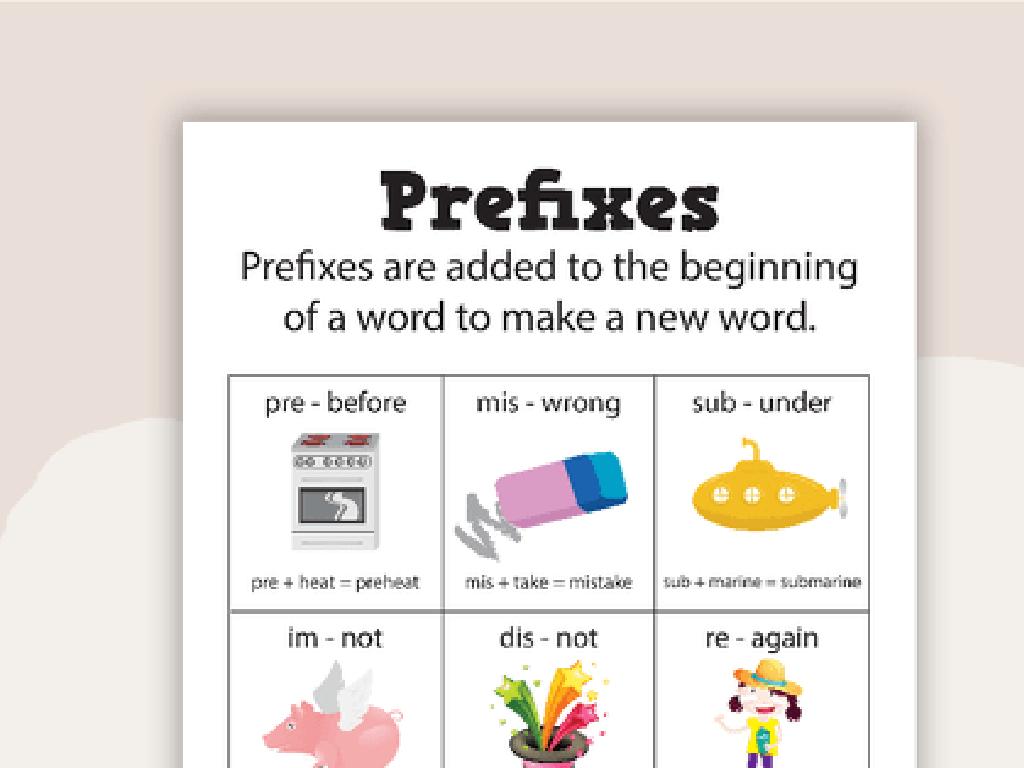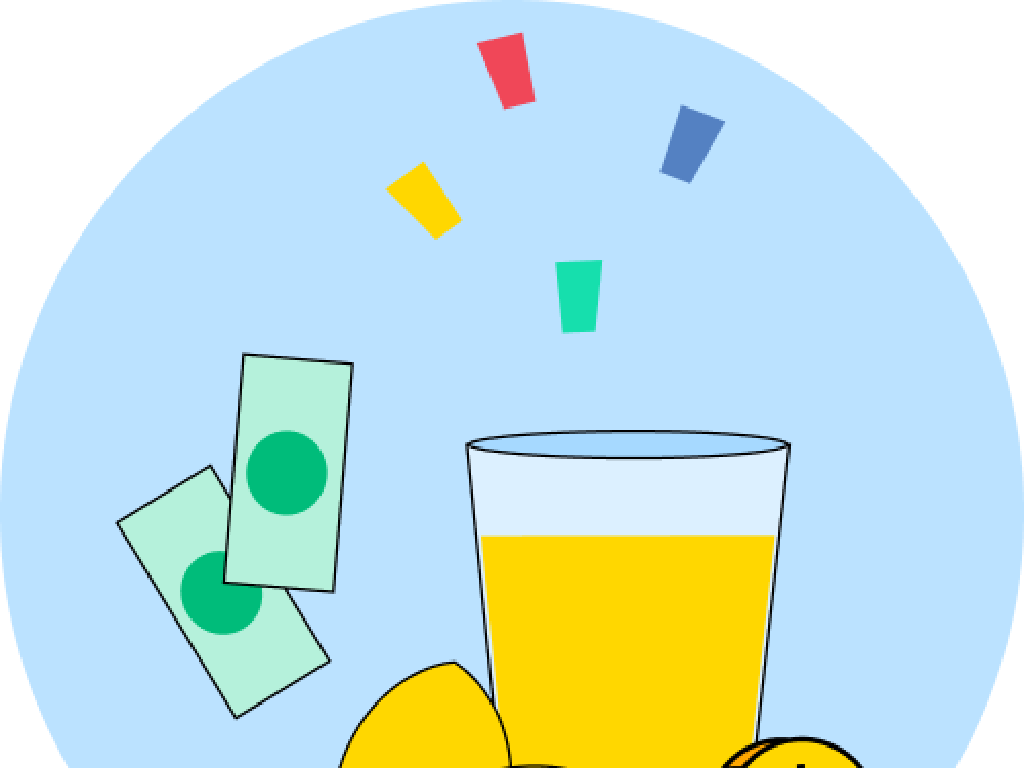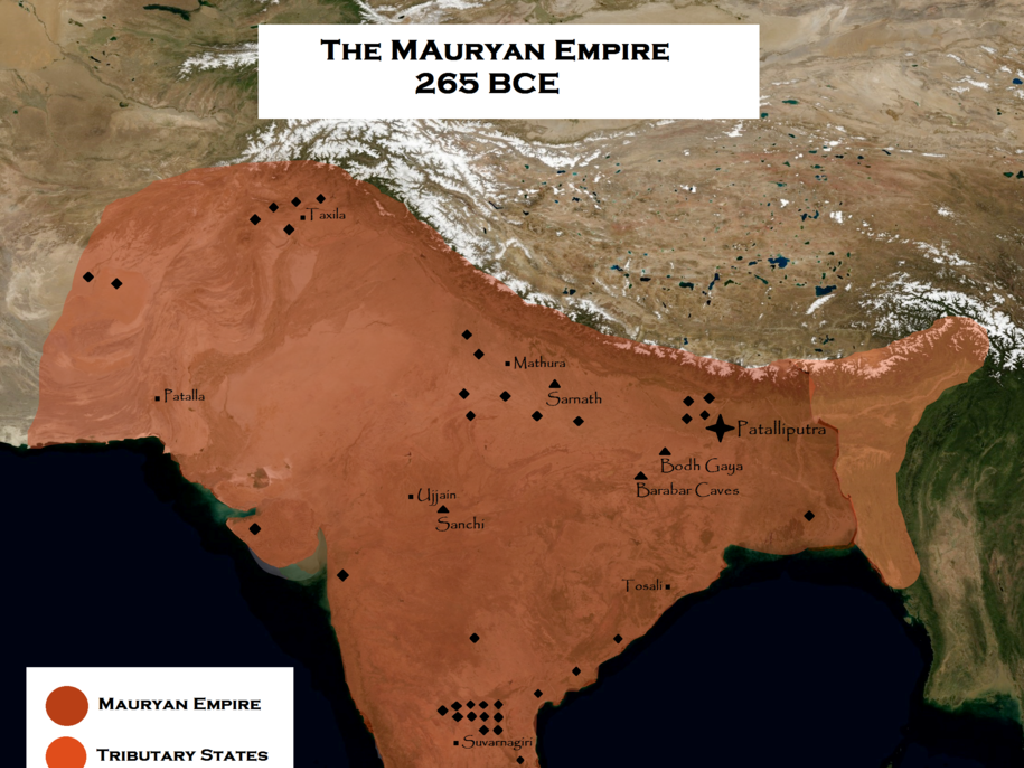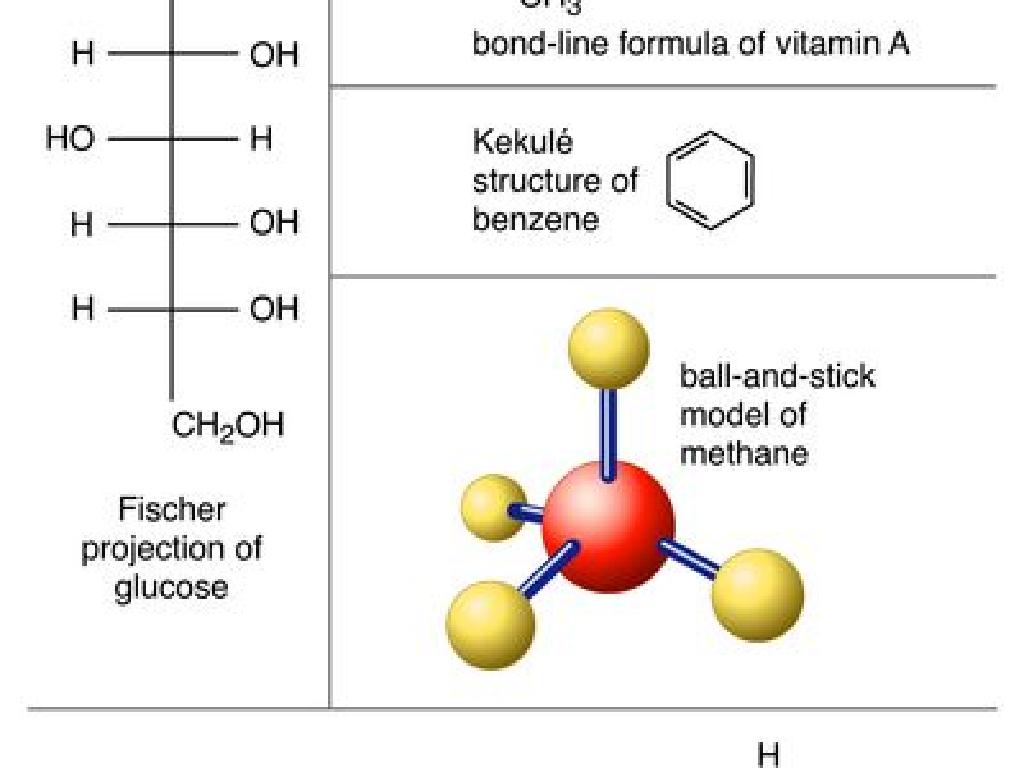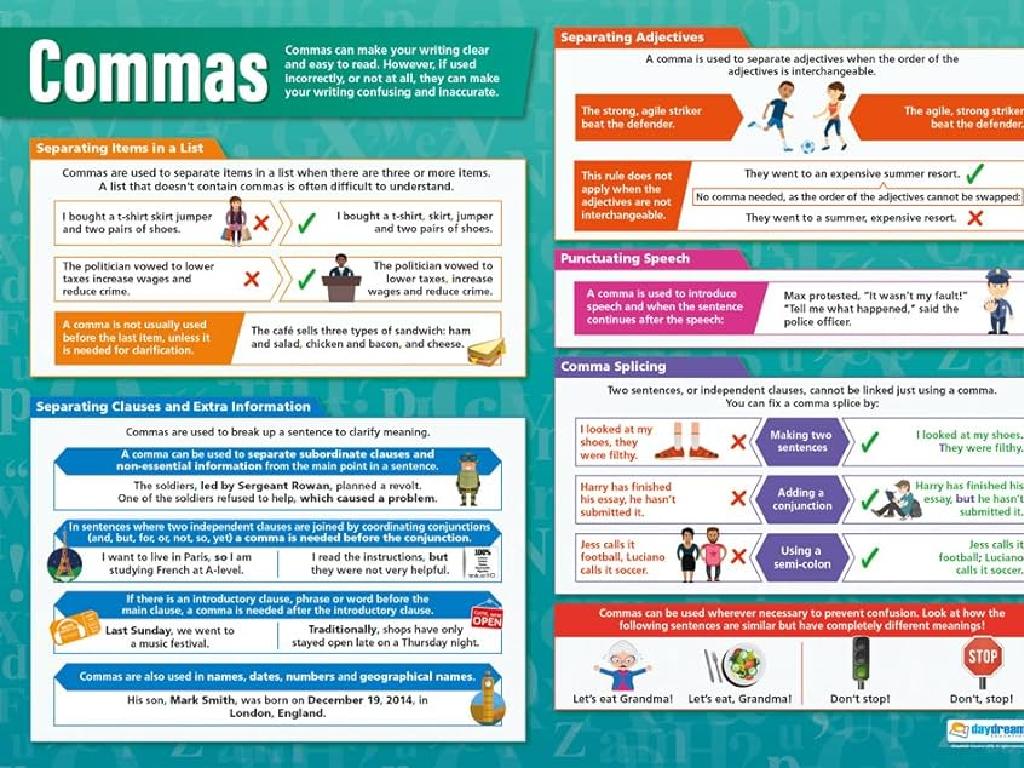Build Cube Trains To Add Up To 10 - Addition Sentences
Subject: Math
Grade: Pre-k
Topic: Addition Up To 10
Please LOG IN to download the presentation. Access is available to registered users only.
View More Content
Welcome to Addition!
– Greet our little mathematicians
– Today is number playtime!
– Learn to add with cube trains
– Cube trains are blocks we line up to count
– Adding up to 10 is fun!
– We’ll make trains of cubes that equal 10
|
This slide is designed to introduce Pre-K students to the concept of addition in a playful and engaging way. Start by greeting the children warmly to create a welcoming learning environment. Emphasize that math is fun and today’s activity will involve playing with numbers. Explain that cube trains are a set of blocks that we can put together in a line to help us count and understand addition. Demonstrate how to build cube trains with different numbers of cubes that add up to 10. For example, show a train with 2 cubes and another with 8 cubes, and explain how together they make 10. Encourage the children to use their hands-on cube trains to practice adding different combinations that result in 10. This activity will help them visualize the addition process and understand the concept of combining quantities to make a new total.
Learning Addition: Building Cube Trains
– What is addition?
– Addition is putting numbers or things together.
– Adding means counting together
– When we add, we count all our items to see how many there are.
– Addition is like a friend party
– Imagine each friend at your party is a number; how many in total?
– Let’s build cube trains to add!
– Using cubes, we can make trains that show total friends.
|
This slide introduces the concept of addition to Pre-K students in a fun and relatable way. Start by explaining that addition is simply the process of putting things together to find out how many there are in total. Use the analogy of inviting friends to a party to help them visualize the concept. Each friend represents a number, and when all friends have arrived, we count them to see how many we have altogether. To make this concept tangible, use cube trains where each cube represents one unit or one friend. This hands-on activity will help students understand that addition is combining groups to find a total amount. Encourage the children to build their own cube trains with up to 10 cubes and write down the addition sentences they represent.
Building Cube Trains to Learn Addition
– Snap cubes together to build trains
– Each cube is a boxcar in our train
– Count cubes to measure train length
– How many cubes long is your train?
– Add cubes to make trains up to 10
– If your train has 4 cubes and you add 3 more, how many now?
|
This slide introduces the concept of using cube trains to learn addition. Cube trains are a tactile and visual way to help Pre-K students understand the concept of addition by physically snapping cubes together to represent numbers. As each cube represents one unit, children can easily count them to determine the length of their train. Encourage the students to build trains of different lengths and then add more cubes to make a total of 10. This hands-on activity not only makes learning addition fun but also enhances fine motor skills and number recognition. Teachers should prepare different sets of colored cubes and guide the students through various addition scenarios, ensuring they understand that the total number of cubes represents the sum of the two added numbers.
Adding with Cube Trains
– Start with a 5-cube train
– Add a 3-cube train to it
– Now we have a longer train!
– Let’s count the cubes together
– Counting each cube, we reach the total of 8 cubes
|
This slide introduces the concept of addition by using cube trains, which is a tangible method for Pre-K students to understand adding numbers. Start by showing a train made of 5 cubes and another with 3 cubes. Explain that combining these two trains makes one longer train. Then, together with the class, count the total number of cubes in the new, longer train. This hands-on activity helps students visualize the addition process and reinforces the concept that adding numbers together makes a bigger number. For the activity, provide different sets of cube trains to students and let them explore making trains of 10 cubes in total, using different combinations. Encourage them to write down the addition sentences they’ve created, such as 5+3=8, 6+4=10, etc.
Building Cube Trains: Learning to Add
– What is an addition sentence?
– It’s a math story about adding things together.
– Addition tells us total amount
– Example: 5 cubes + 3 cubes
– Like a train, we join 5 cubes and 3 cubes to get 8 cubes.
– Cube trains make addition fun
– We use colorful cubes to see how numbers combine to make 10.
|
This slide introduces the concept of addition sentences to Pre-K students using the analogy of building cube trains. Start by explaining that an addition sentence is a way to tell a story about numbers coming together. Use physical or visual cubes to demonstrate how 5 cubes added to 3 cubes equal 8 cubes in total. Encourage the children to use hands-on cube trains to visualize and understand the addition process. The goal is to make learning addition tangible and engaging. For the activity, provide different sets of cubes and ask the students to form their own trains that add up to 10, allowing them to create multiple addition sentences.
Let’s Practice Together: Building Cube Trains
– Build your own cube trains
– Make a train with 4 cubes
– Use 4 colorful cubes to build a small train
– Make another train with 6 cubes
– Now, use 6 cubes to make a longer train
– Find the addition sentence
– Combine both trains, count all cubes, and write the addition
|
This slide is an interactive class activity designed for Pre-K students to practice addition up to 10 by building cube trains. Provide students with a set of colorful cubes and instruct them to build one train with 4 cubes and another with 6 cubes. Once they have built their trains, guide them to put the trains together end-to-end and count the total number of cubes. Help them to understand that combining the two trains is like adding the numbers together. Encourage them to write the addition sentence that represents their cube trains, such as 4 + 6 = 10. This hands-on activity will help solidify their understanding of addition and the concept of combining quantities to make a new total. Possible variations of the activity could include using different numbers of cubes to make trains that add up to 10, or having students work in pairs to build and combine their cube trains.
Cube Train Party
– Pair up for cube train building
– Construct cube trains up to 10
– Create addition sentences
– Use cubes to visualize adding numbers
– Share your trains and math
– Explain your addition to the class
|
This slide introduces a hands-on class activity where students will work in pairs to build cube trains with a total value of up to 10. The objective is to reinforce the concept of addition by physically creating trains of cubes that add up to 10. Each pair will then formulate addition sentences based on their cube trains and present their findings to the class. For example, a train with 4 red cubes and 6 blue cubes can be expressed as 4 + 6 = 10. Teachers should circulate the room to assist pairs as needed, ensuring that each student is engaged and understands the addition concept. Possible variations of the activity could include using different colored cubes for each number in the addition sentence, challenging students to find all possible combinations that add up to 10, or having a ‘gallery walk’ where students observe and discuss the cube trains created by their classmates.

